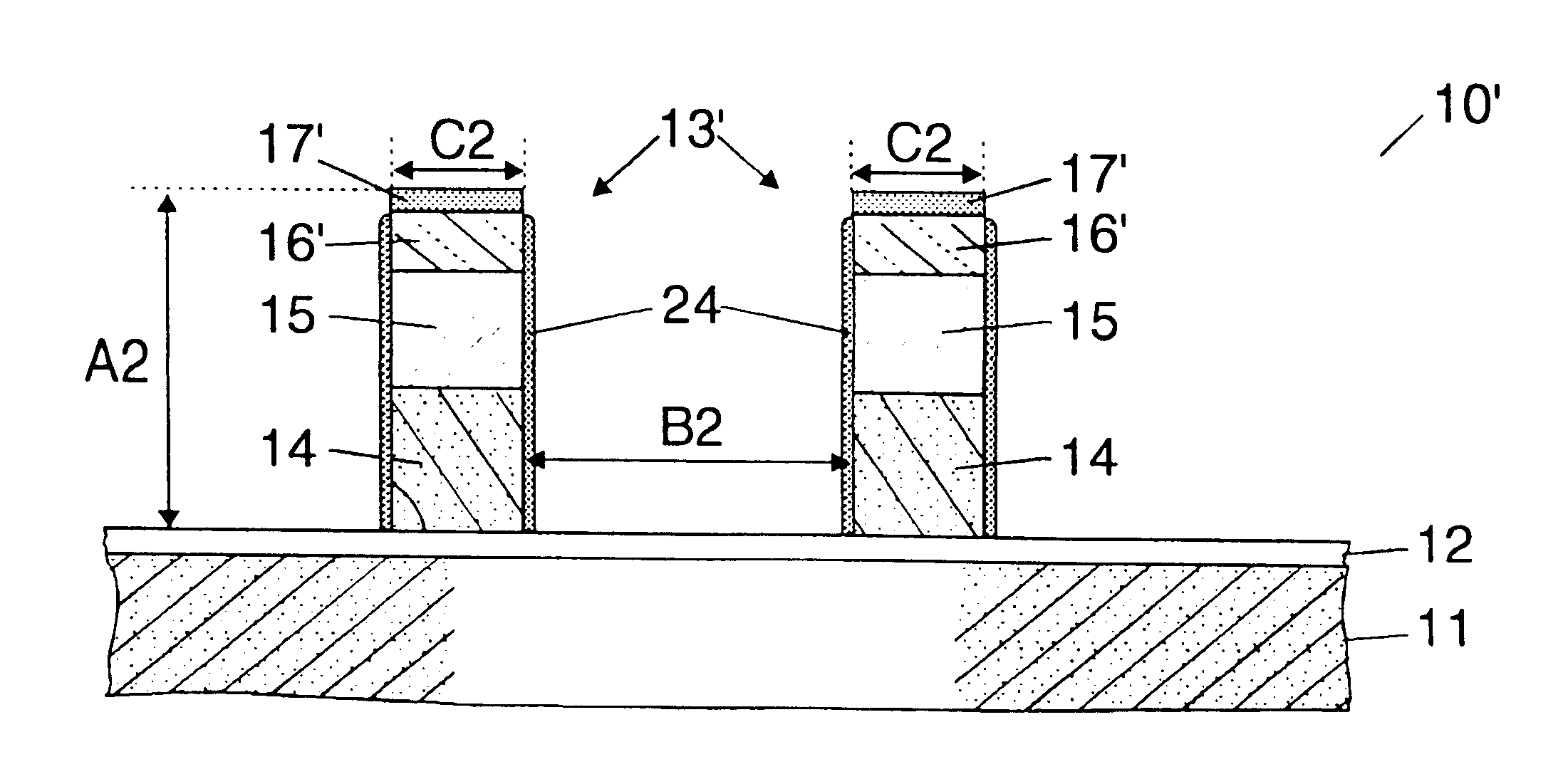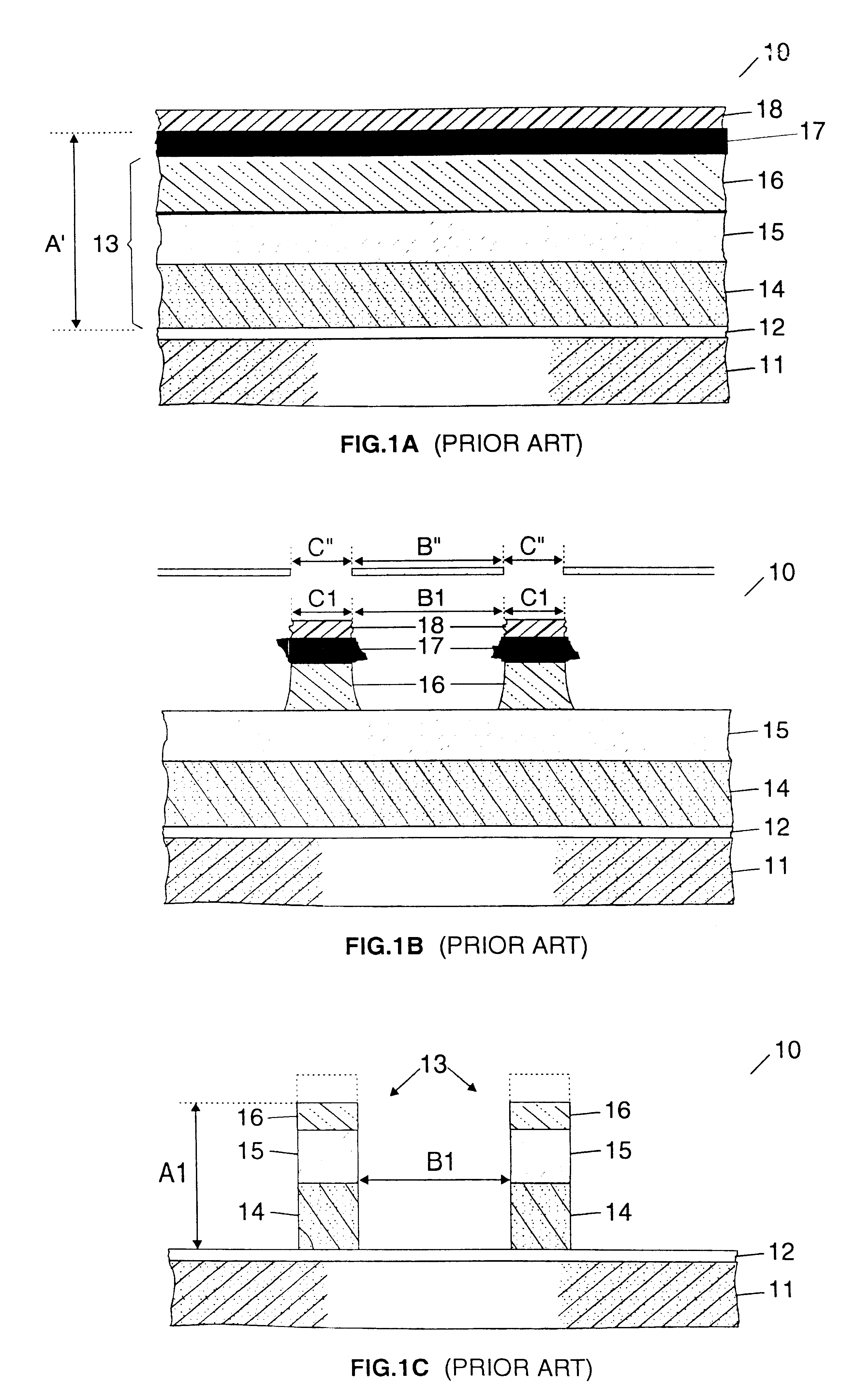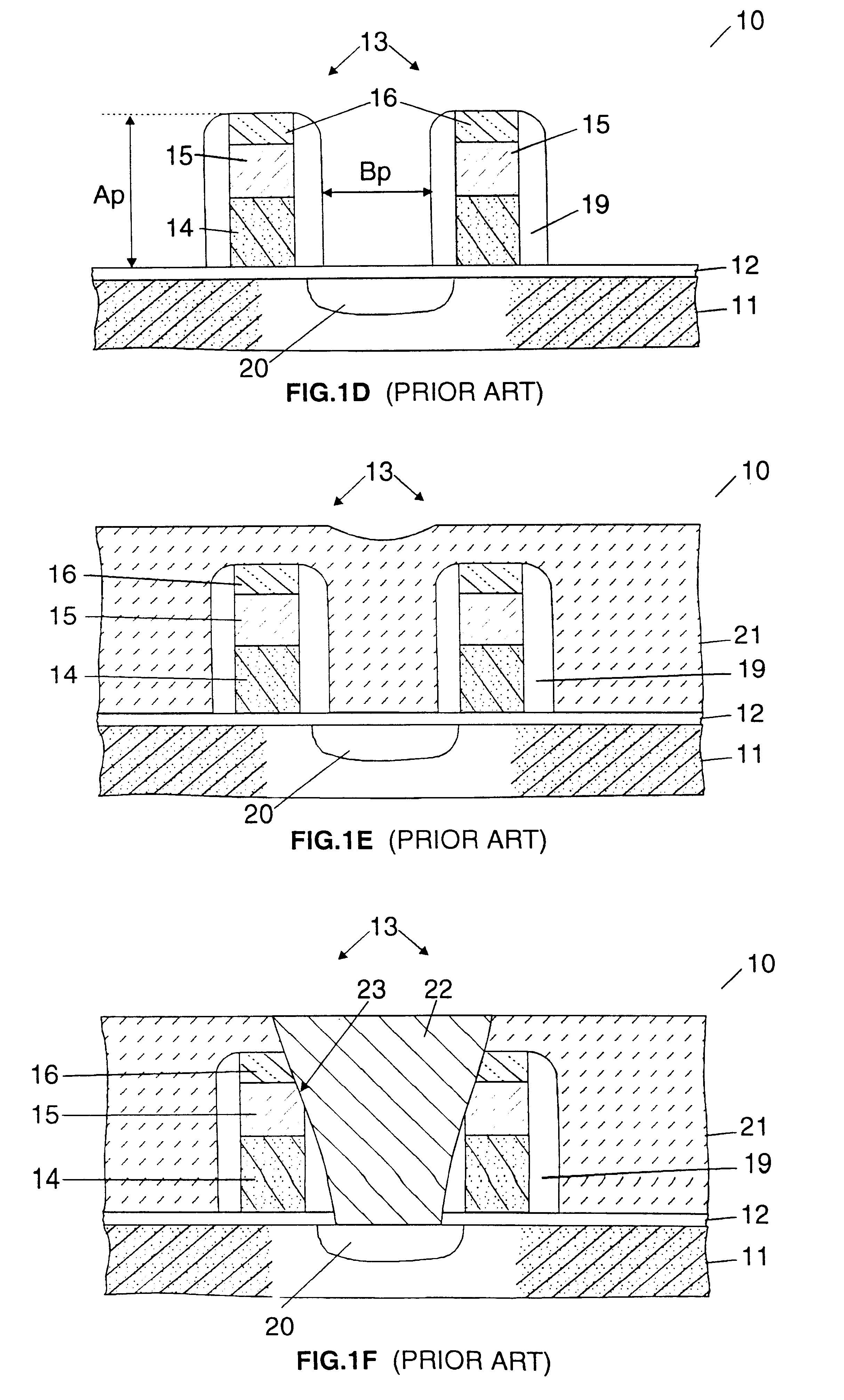Method of fabricating a Si3N4/polycide structure using a dielectric sacrificial layer as a mask
a polycide structure and dielectric sacrificial layer technology, applied in the direction of semiconductor/solid-state device manufacturing, basic electric elements, electric apparatus, etc., can solve the problems of very detrimental si3n4 line bottoms to an accurate c1 dimension control
- Summary
- Abstract
- Description
- Claims
- Application Information
AI Technical Summary
Benefits of technology
Problems solved by technology
Method used
Image
Examples
Embodiment Construction
Applicants' inventors have evidenced that most of the above defects were related to the BARL material.
In essence, the main role of the BARL layer 17 is to absorb all incident light emitted by the photo-stepper in order to avoid refractive light induced by the underlying layers (the WSix material has a high reflectance as all metallic films). In reality, it just only allows to improve GC stacks 13 exposure. In substance, it has been pointed out that the BARL material is not impervious enough to UV light. As a result, standing waves caused by unwanted resist exposure due to reflections on the WSix material are created in the resist layer 18, inducing undulations in the resist lines from wafer to wafer and lot to lot with the attendant disadvantages described above.
In the present case of the conventional borderless contact fabrication, the good planarization property of the BARL is rather a drawback. Because, the BARL layer 17 is not conformal at the structure 10 surface, it induces to...
PUM
 Login to View More
Login to View More Abstract
Description
Claims
Application Information
 Login to View More
Login to View More - R&D
- Intellectual Property
- Life Sciences
- Materials
- Tech Scout
- Unparalleled Data Quality
- Higher Quality Content
- 60% Fewer Hallucinations
Browse by: Latest US Patents, China's latest patents, Technical Efficacy Thesaurus, Application Domain, Technology Topic, Popular Technical Reports.
© 2025 PatSnap. All rights reserved.Legal|Privacy policy|Modern Slavery Act Transparency Statement|Sitemap|About US| Contact US: help@patsnap.com



